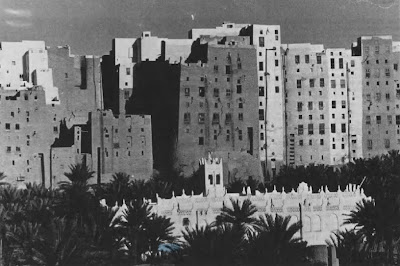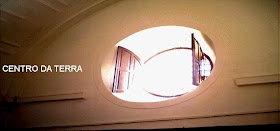"A realistic picture of the new trends in architecture and housing techniques that are destined to prevail at the end of this century would be incomplete without reference to a domain in which rapid and important developments are already taking place--building which uses unbaked earth as its prime material.
Earth building as an architectural technique, which in its up-dated form has an important role to play in meeting the needs and challenges of our time, has very long history. Since towns were first created, some ten thousand years ago, men have used this material to build entire cities--places and temples, churches and mosques, warehouses and forts, defensive walls and proud monuments.
Readily available over most of the globe, this seemingly humble material has been used in every continent and climate, in all latitudes and in nearly every pre-industrial culture and civilization, in long stretches of the Great Wall of China, built over twenty centuries ago, as well as in both the simplest and the most imposing dwellings. It has proved its versatility and the extraordinary variety of forms and functions to which it can be applied. Its solidity and strength, when it is correctly used, have been abundantly demonstrated.
Over recent years Unesco has helped to promote recognition of this part of the universal heritage by proposing the classification of towns with fine examples of buildings in unbaked earth such as Ouro Preto, in Brazil, Shibam, in the People's Democratic Republic of Yemen, and Sanaa, in the Yemen Arab Republic.
Since the beginnings of modern science attempts have been made to rationalize and improve the empirical earth-building techniques used in pre-industrial societies all over the world.
The pioneer in the use of these techniques in modern times was the French architect Francois Cointeraux (1740-1830). As early as 1797 he invented several processes for stabilizing earth to increase its mechanical and chemical resistance and its adaptability to the new creative trends in architecture which had been launched by such visionary architects as Claude Nicolas Ledoux (1736-1806) and Etienne Louis Boulee (1728-1799).
Cointeraux was not only a theoretician, he was also a practitioner and an enlightened teacher and published many works which were widely read not only in Europe but also in the Americas and Australia. For the best part of a century his designs were used in the construction of factories, schools and public buildings as well as of dwellings of all kinds, ranging from stately homes and middle-class residences to housing estates for workers and five-storey city apartment blocks.
Cointeraux can thus be considered to have invented modern earth architecture two centuries ago. In the Grenoble and Lyons areas of France, where Cointeraux lived, several specimens of his creative talent survive in perfect condition, adding their contribution to the age-old traditional urran and rural architectural heritage of buildings made of earth. So this region is a kind of vast open-air museum of the oldest and the most modern earth-building techniques.
But in France, as elsewhere, the irresistible commercial progress of industrial materials such as cement, concrete, baked bricks and steel has led to a gradual decline in the use of earth during the present century. It was only when violent crises interrupted the production of these materials that architects and builders again had recourse to unbaked earth. This happened in Europe during and after both world wars. Tens of thousands of earth dwellings were built, especially in Germany, during the 1920s and again in the 1940s. Also during the 1940s some of the great stars of modern architecture--Frank Lloyd Wright (1867-1959) in the United States and Le Corbusier (1887-1965) in France--designed a number of projects in unbaked earth.
During the same period this new architectural approach had its first repercussions outside the industrialized countries. A very rational and impressive regional hospital was erected in 1943 at Adrar, Algeria, by the Belgian architect Michel Luyckx. In Egypt, Hassan Fathy was to set out on a long cultural odyssey lasting forty years which would lead him to rediscover the ageold earth building traditions of his country and to rehabilitate and modernize them. His approach, at one and the same time theoretical and practical, philosophical and militant, was to make him the first guru of a democratic form of architecture that was specifically adapted to the cultural and economic realities of a Third World country.
However, despite the important work accomplished by these and many other architects all over the world, during the 1950s and 1960s earth building continued to be marginal and precarious as compared with the predominant modes of thought and production. The advocates of "progress at any price' were strong in numbers at that time of economic euphoria in the West and of political euphoria in a number of Third World countries then coming to independence. From the very start the mere idea of using earth as an officially approved building material was scorned and rejected.
This was the golden age of the "international style' in architecture, of unbridled industrialization and "heavy' technology which so many countries adopted as their chief or sole model for economic, technical and cultural development.
For many reasons decision-makers and planners have now become more realistic and have adopted a more diversified approach. Various development myths have given way to doubts followed by a search for less grandiose, less "universal' solutions that are better adapted to local realities. The concepts of "appropriate technology' (appropriate to a specific context) and "intermediate technology' (intermediate between the costly heavy technology of the industrialized countries and archaic, outmoded traditional techniques) have come into their own.
Since 1972 international energy and economic crises have imposed an urgent reappraisal of modes of thought and action, not only in the rich but also in the poorer countries. Substitute energy-saving solutions were suddenly needed in the building sector--a big energy consumer in all countries. It was then discovered that the customary building materials, such as cement, concrete, steel and even baked bricks, were, by their very nature, high energy consumers.
By the early 1970s a small international group of architects and engineers had already foreseen this inevitable development. They started discreetly to elaborate alternative solutions and set up a non-profit association within the Grenoble School of Architecture--the Craterre group. Its aim is threefold: first, to study the whole range of earth building techniques scientifically and without any pre-judgment, to modernize them and make them operational, reliable and economical in the light of present and future requirements; second, to participate directly in earth building schemes, both in Europe and in the Third World, so as to provide a practical demonstration of new approaches to housing and public works problems; finally, on the basis of this balance between research and its applications, to fill a serious void in the field of training by setting up specialized courses at university level.
In the early 1970s, thanks to this threefold approach, the Grenoble School of Architecture became the only one in the world to provide this type of training, which was open to architects and engineers from all countries. A setting was thus created for study and practical work on the future of economical building techniques at a time of very rapid growth in demand for ultracheap of the symposium, provisionally entitled Le World (the needs of urban Africa alone within the coming fifteen years are estimated at fifty million housing units) and of worsening economic crisis in many of these countries due to their enormous foreign debts.
Under these circumstances, recourse to earth makes it possible to avoid importing costly materials or the energy to produce them locally. The earth option enables a form of development to be envisaged that is centred on the indigenous economic, natural, cultural and human resources of the country or region concerned. Thanks to appropriate transfers of modern earth building technology it is possible to move directly from outmoded techniques to the most efficient processes, the houses being constructed, if so desired, by the future occupants themselves.
There has been a radical change in recent years in the attitude, both of the public and of decision-makers, towards the use of this material previously regarded with prejudice if not hostility. This change has been confirmed by the international success of exhibitions such as Earth Architecture: the future of an age-old tradition (organized in Paris in 1981 by the Centre de Creation Industrielle) and the construction of a unique experimental housing centre in the new town of I'Isle d'Abeau, at Villefontaine, near Lyons, France.
The interest aroused by the latter achievement has led many experts and technicians from other parts of Europe as well as from Asia, Africa and the Americas to come to I'Isle d'Abeau to study on site the possibility of adapting the techniques used there to the needs of their respective countries. In November 1984, Unesco, in collaboration with the Craterre group, organized a one-week, on-site seminar for a group of architects and decision-makers from six countries in Africa and the Middle East who are faced with the need to build a large number of schools at very low cost for which this technology could be adapted.
Encouraged by the success of this initial experiment in earth-built dwellings and the international interest it has aroused, the authors of the project are already planning a second, more ambitious and structured project in France to meet the growing demand in this field.
An International Earth Building Institute is to be established this year with Craterre as its nucleus and association with a number of scientific, technical, university and cultural partners. Its activities will be concentrated in four sectors of major importance: research, practical applications, university-level education and information. This strategy corresponds exactly to the forms of action requested as an "urgent prionity' at the First International Symposium on Earth Construction, held at Brussels in December 1984 under the auspices of the United Nations.
It is hoped that a second complex will be built in earth at I'Isle d'Abeau to house the future Institute, the complex being completed by an Earth University, an Earth Embassy, a Museum of Earth, Building Techniques, an hotel and a number of individual and collective dwellings. By its nature this complex would provide an opportunity to make use of an extensive range of architectural, urban, technical and functional variations using earth as the building material.
This project should be completed by the summer of 1987, the date set by Plan Construction--an experimental and research body attached to the French ministry for housing and town-planning-- for an important international symposium in this region to be organized in collaboration with the Institute. One of the objectives of the symposium, provisionally entitled Le Sommet de la Terre, will be to review the real political, economic, social, technical and cultural issues involved in the use of earth-building methods in different parts of the world.
Meanwhile, in 1985, China will play host in Beijing to another international seminar which will review the results of recent research in which that country, like so many others, is closely interested.
These reviews and perspectives will form a vital, realistic contribution to the International Year for Housing and the Homeless which has been proclaimed by the United Nations for 1987.
"

























![Terra [In]cognita project: Earthen architecture in Europe](http://1.bp.blogspot.com/-36uMVOoZMLE/TazQAiZE1KI/AAAAAAAAByA/NCxO8IKqLTg/s285/logoterraincognita.jpg)
